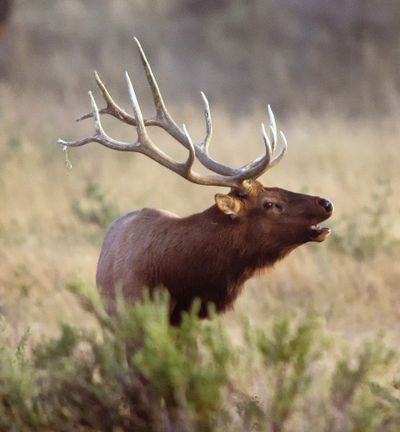S-R Hunting Outlook 2012: Ups and downs for Eastern Washington elk hunters

Northeastern Washington has gained stature among elk hunters in recent years, with the 2011 elk harvest exceeding the general season take in the fabled Blue Mountains.
But that’s likely to change this year.
For the first time, general-season elk hunters will be restricted to shooting only antlered bull elk throughout Ferry, Stevens and Pend Oreille counties. The change includes hunts for modern rifle and muzzleloaders as well as late-season archery. Antlerless elk generally are only fair game for hunters with special permits.
After vigorous debates at public meetings last year, Washington Department of Fish and Wildlife officials said a majority of hunters favored a retreat from the general-season cow elk hunting that had been offered in some units for the Selkirk elk herd.
The area has always been a tough hunt for sportsmen who weren’t locally connected to the elk hot spots. Overall, northeastern Washington hunters have less than a 5 percent chance of filling a general elk tag. Multiple- season tag holder success jumps to around 19 percent.
Blue Mountains elk surveys suggest that yearling survival has improved. That’s good news, since general-season hunters can target only spike bulls in the steep, rugged mountains of Asotin, Columbia, Garfield and Walla Walla counties.
Hunters who draw special tags for bull or cow hunts in the Blues have excellent success rates.
Far Eastern Washington’s top elk hunting areas with good public access are units 113 and 117 in northeastern Washington and units 162, and 178 in the Blues.
The region’s most productive general-season elk hunting is in the units of Spokane, Lincoln and Whitman counties, where general-season success rates are around 13 percent. But most of the hunting is on private land and access can be difficult for the average hunter. Indeed, “any elk” seasons continue to be offered for hunters in some of these units, including Mount Spokane Unit 124.
Permit hunts authorized since 2010 in Turnbull National Wildlife Refuge have flushed some elk out of their former sanctuary, improving hunting success for hunters with access to private land surrounding the refuge.
However, some of the elk have moved out to form more permanent herds in the farming areas and scablands farther west and southwest. Elk have been seen on the Bureau of Land Management’s Telford area ranging to Creston this summer and a group was seeb between Fishtrap and Sprague lakes. More established herds roam near Tyler and Benge, according to Howard Ferguson, a state wildlife biologist in Spokane.